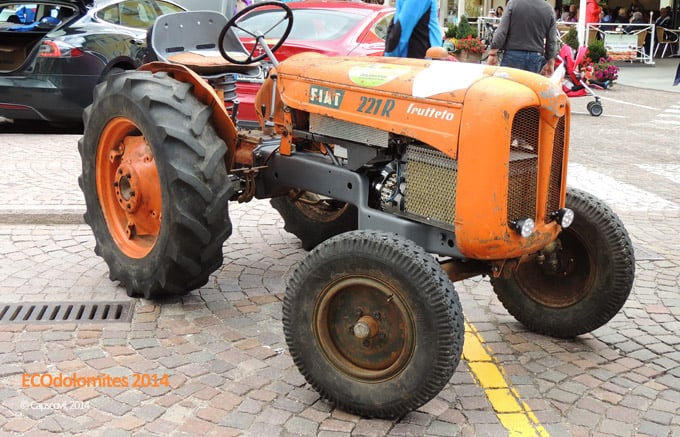Event related article
June 11, 2015
Conference summary: we.CONECT Automotive Steering, February 26-27, 2015, Berlin
There is no doubt among the delegates in Berlin that cars will be more complex in future. But what will be the features that consumers are willing to pay for when it comes to steering? Are there special technologies among them?
Manish Menon, research analyst Chassis & Safety for Automotive & Transportation with Frost & Sullivan, takes a look at the worldwide steering market and consumers’ willingness to pay for dynamic driving technologies. To understand the revenue potentials in Europe and North America one has to look at the difference in vehicle types preferred in the respective regions. Europeans tend more towards cars in the A and B segment whereas US customers prefer SUVs. Overall it’s expected that column and rack electronic power steering, the first used in the A, B, C and the latter in C or above segments, will be the main systems. CEPS is expected to be more dominant in Europe and REPS in the US. Pinion based electronic power steering which is currently the system of choice in the luxury segment is expected to lose market share. Looking at the investment costs for steering technologies one finds that they were going up since 2002 as volumes have not been growing as expected but rather declining. Due to the high-cost of ownership the market is stagnant. In Europe, only twenty percent of buyers would be willing to buy active steering at an average price of 500 Euros. At current pricings of around €1.500, less than ten percent would buy such a system. Among European car makers Ford seems to have the lead on customers willing to buy advanced steering systems due to its relatively moderate pricing.
Besides the implementation of loss-of-assist mitigation systems in case of recalling vehicles due to steering system failure several key areas can be identified in which steering systems will be further developed in the next decade. One is the integration of advanced EPS functions such as assisted driving and parking features as well as traffic jam assist and blind spot detection or lane departure assistance. Another is the development of low-cost column EPS that can be best achieved by forming strategic partnerships between OEMs and suppliers to share investments in the development as well as profits from sale in order to reduce the overall cost and enable more attractive pricing. EPS systems coming to heavy duty vehicles will need to cope with higher forces than passenger cars. Fords F150 for example shows 15kN on the front axle, Volkswagen has vehicles with up to 24kN. The most enhanced area is the steer-by-wire technology.
What are the consumer preferences in Europe when it comes to steering technologies? Even if driving a sporty or luxury car is still viewed as a symbol of status in some countries it surprises to see that almost a third of drivers would be willing to let go of the steering wheel and have the car take over in certain situations like traffic jams or parking to increase safety and stability. Due to high awareness and preference, four-wheel driving has the highest potential across all countries followed closely by active front steering most desired in Germany and steer-by-wire which has the biggest fan base in Russia. If coming at a price tag of 680 Euros over sixty percent of Russian customers would favor steer-by-wire over four-wheel-drive the research by F&S suggests. Bundling of options such as air suspension with steering systems can increase the take rate with consumers. Therefore Tier1s besides Bosch and Continental who cover the full suite of features already would be well advised to step up their offerings. Understanding Asia compared to Europe or the US is more complex as the market is more divers. But also cost is an even greater factor in Asia leading to a very high demand for low-cost EPS systems which call for strategic partnerships.
GET A FEEL FOR THE ANGLE
One way to increase the driver’s comfort and enhance his driving experience is to lighten the steering load with adaptive technology. Since manual systems were displaced by hydraulic and speed dependent assisted systems electric components for rejecting torque disturbances have been taken on board paving the way for adaptive steering and leading towards steer-by-wire solutions that are anticipated without the need for mechanical back-ups in their final stages. Oliver Nehls, steering technical specialist with Ford in Germany, outlines the technological principle building the base for their adaptive solutions. A superposition gearbox with an electric motor breaks up the rigid connection between road and steering wheel angle. In addition to the angle created by the driver’s steering activity an overlay angle is added at low speeds or subtracted at high speeds. This changes the gear ratio effecting the position of the wheels. If no steering input is given the system locks a mechanical connection to keep the road wheels on track. The solution provides a compromise and allows for an agile response at low speeds as well as safe stability at high-speeds while enabling personalization with comfort, normal or sporty modes.
Turning the concept into reality was a challenge with regards to packaging and making the system crash-safe as existing steering solutions comprised pinion mounted planetary gears and intermediate shaft packaging. In order to support various platforms with minimal hardware changes and to make the system easily portable a modular concept with stiff actuators and low friction for precise control was needed. Ford entered into a partnership with supplier Takata and developed a new solution that takes up the same packaging space and uses the same interfaces. The outcome is an adaptive steering actuator integrated into the steering wheel. As the packaging space had to be close to the one available in a conventional steering wheel a new clockspring was needed with a dedicated high and accuracy steering wheel angle sensor. The partners were able to create a system that incorporates not only the vacuum folded airbag but also all necessary armature and switches which are wired directly to the integrated ECU which in turn has a direct connection to the CAN bus. This design resulted in a unique trim for the six o´clock spoke. The helical gear which is driven by worm gear on the motor shaft features a ratio of 48:1. The motor itself is a brushless DC motor with four pole pairs and redundant hall sensors for positioning. Motor and gear move with the turning steering wheel. The system is locked into a fixed mechanical and unpowered connection by activating a solenoid that moves a pin into the locking disc at the end of the motor shaft.
The new clockspring unit features a redundant multi-turn steering wheel angle sensor with eight tapes. The modularity of the system design allows for adding features as plug-ins. Additionally, it offers a generic external delta-angle interface for other ECUs controlling functions such as brakes, EPAS or camera, thus enabling vehicle personalization through the steering system in conjunction with suspension, brakes and powertrain. Ford vehicles EDGE, S.MAX, Galaxy will be the first to have this modular adaptive steering but the system can be migrated to all Ford and Lincoln vehicles. One concern that arose during the development was a possible issue with noise as the system is very close to the driver but this could be minimized by the choice of motor and actuator components. Friction was a topic but was compensated with software. There was no problem with inertia as the steering column was changed to prevent eigen frequency. To find out if the vehicle has adaptive steering hobby spooks just need to check the six o`clock spoke: closed is a clear sign.
WEAR ON WORMS
Material development expert Professor Malcolm Fox, R&D Manager at Nylacast, had been looking for clear signs connected to their safety critical automotive steering components, namely EPS worm gears. These composite worm wheels are monomers and available for platforms ranging from 40mm/35Nm torque to 100mm/90Nm torque, currently even heading to 110Nm. But how have these performed in their line of duty with regards to wear, surface finish, stability and integrity? To answer this question, EPS steering systems had been recovered from some ten year old vehicles retired at junk yards. One interesting finding was that the greasing was still okay preventing higher friction that would have caused system degradation by roughly a third. Also the dual flank inspection and test of the gear teeth surface finish showed no visually apparent wear for gears used over 145,000km. Another gear and worm taken from an urban delivery vehicle with 155,000km on its back displayed only low variations and still had a good concentricity and uniform wear lacking residual stresses that would have made it out of round.
A result of inspecting the used components is that attention needs to be given to sealing steering components against water ingress as corrosion was found on some. Standard requirements for rack EPS are -50°C to 165°C and column EPS -40°C to 120°C. Nevertheless the temperature within an EPS gear box can rise by an incremental 30°C to 40°C during intensive use such as in taxis which raises the working temperature to a permanent 60°C to 70°C. Therefore requirements for maintaining more than fifty percent of the original physical properties of gear worms used in EPS need to be raised to above 5000 working hours at a continuous temperature exposure to 85°C. Other polymers might be necessary to achieve this, however glass filled polymers are not viable as the glass fiber filler will add to the wear of the gear. Very performant polymers are PEEK (PolyetheretherKetone) as well as PAEK, PEK, PEKK, PECKECK but their cost is not acceptable. Seems even for worms the devil is in the detail.
DRIVING SAFETY
The evolution of steering systems towards adaptive or steer-by-wire technology needs to ensure reliable functionality in order to guarantee safety of the driver. Regulations for vehicle safety worldwide are mainly driven by the New Car Assessment Program NCAP. But safety concerns start at corporate level Mahesh Shinde, General Manager of Tata Motors emphasizes. Companywide safety policies need to be implemented reaching down to the product line. After validating the produced steering item one needs to validate the whole steering system and then validate the implementation of the system in the car to ensure it complies with the safety requirements. In case of a failure, the safety aspects are checked using the fault tree analysis for the duplex architecture of main and sub ECU and the watchdog safety controller (WSC). The latter can reset the main controller, carry out a self-diagnosis of the main ECU or shut down the adaptive steering system if no recovery is possible.
he ECUs have to comply with requirements of the respective automotive safety integrity levels (ASIL) that are described in ISO 26262. To define if there is either loss of steering control of vehicle instability a Hazard & Operability (HAZOP) analysis is conducted. Thereby, the reliability of the steering system is validated using metrics for failure, frequency of failures, unavailability of I/P, O/P, signals and mean time of failure combined with ratings for level of severity, exposure probability and controllability to define the maximum probability of each failure. In India, the infrastructure is not set for steer-by-wire yet. Other problems like parking are more pressing. Therefore, it’s most important for OEMs to deliver what the customer wants.
SMART STEERING
Pressing issues can also be found elsewhere. In Sweden, it is the need for electronic experts which doubles every 5 to 7 years at automotive companies. Even if all engineers went to work in the automotive industry it would not be enough, Johan Wedlin, Business Developer Emobility/vehicle electronics & vehicle automation with Viktoria Swedish ICT AB, points out. But how can this problem be tackled? It is time to rethink the design of electronic systems in the car and simplify the vehicle architecture by modularizing and turning it into NPA. The New Product Architecture will enable OEMs to focus internal resources on brand uniqueness and product features while utilizing their suppliers’ competencies and leveraging economies of scale. The NPA concept was developed by Ford, Volvo and Jaguar around the turn of the millennium based on a twofold strategy: a technology strategy to manage complexity and develop cost effectively; and a business strategy for sourcing, flexibility, reuse, speed and volume.
The vision within the NPA is to implement new or enhance existing functionality, increase quality by reducing complexity, get shorter time to market with the reuse of existing components and lower the costs through high volumes of standardized sensors and actuators used on low level functionality. Separating hardware and high-level software would help to get rid of the current spaghetti network consisting of many control units with discrete actuators that have to interact with each other. It would make way for multi-purpose ECUs combined with smart sensors and actuators that consist only of hardware and lower-level software that is needed to control the actuator. The high-level software with algorithms to control the overall vehicle functions would still be the sovereignty of the OEMs. The evolution into the next level of NPA 2.0 is to implement the business model together with standardizing bodies like Autosar, Genivi and the Open Automotive Alliance.
The goal should be to standardize certain hardware and software, and maybe even the electrical architecture as it’s irrelevant for the end customer, and build a Vehicle Control Functional Architecture (VCFA) in which the OEM can source actuators, sensors and functions with standard interfaces from different suppliers. Development of core functionalities within the NPA would ensure efficient product development, improve sourcing efficiency providing lower costs and competitive product attributes. Important for OEMs is to define which functions are relevant to the brand so they can focus on the in-house development of this core value functions. The timeframe for a smart actuator used in assisted steering systems is hard to be defined as it’s not depending on a technical issue, but on the business model. And this discussion will be no easy one.
STEERING ON A DIET
Sustainability is becoming more and more a competitive advantage. Regulations on emission requirements and customer expectations are putting the automotive industry under pressure. Manufacturers like PSA have hopped onto the bandwagon of sustainability and are working on reducing emissions to levels even below the actual legal threshold reflected in an average 110,3 CO2 g/km value across their fleet in 2014. Weight savings are one possible approach besides efficiency changes to aerodynamics, powertrain and energy management or lower friction of tires. Arnaud Lizot, Innovation and Advanced Technologies Chassis System Manager with PSA-Peugeot-Citroen and his colleague Laurent Rey, Cost Reduction Manager and Plastic Expert for JTEKT share details from their partnership project for a lighter EPS within the two liter per 100 kilometer program targeted for launch in 2020.
The weight defining parts within an EPS are eight components which make up 80 percent. Especially the motor, rack bar, tie rods and pinion have an effect on the packaging which depends on the front axle geometry and targeted vehicle weight. Regarding the rack bar, evaluations showed that a gun drilled steel rack bar has the best compromise in weight and price over the lighter but more expensive new hybrid tube technologies. For the outer ball joint material steel could be replaced by aluminum allowing for a third less weight while maintaining mechanical strength and rigidity at roughly the same price tag. In the case of the reduction gear, steel could even be replaced by glass reinforced polyamide (PA66) subtracting another half of pound off the scale. Optimizations of the aluminum housing reflected a weight reduction of around fifteen percent without additional costs. Further potential lies in the use of magnesium but is not seen in the immediate future due to costs and availability within the supply chain. All in all the initial target of 20 percent in weight reduction could be reached, even overachieved by two percent points, by downsizing parts and applying new material technologies. However, in order to achieve significant weight savings necessary to reach stricter CO2 targets in ten years light-weight and composite materials for the car body and new powertrain technologies like electrification need to be implemented.
WIRED TO VECTORING
When it comes to safety of steer-by-wire architectures there are two options. Be fail safe with a redundant mechanical fall back system or be fault tolerant with one system which gives you more freedom in designing and packaging that is also reflected in the steering experience. For a fully automated driving mode with the driver turned into an idly sitting occupant of the vehicle, fail safe systems seem to be in order. Independent of the use of a steering gear based system or actuators at the wheel, the redundancy can be within the system or outside of it. Kristof Polmans, head of vehicle dynamics and testing at ThyssenKrupp Presta AG thinks that the latter offers a new possibility. Take longitudinal forces at the wheel that generate a torque around the kingpin. This torque could be used for controlling the road wheel angle.
The best results for torque vectoring are anticipated with electric vehicles propelled by single wheel motors. Therefore, a vehicle model was derived using the electric Formula Student car developed by ETH Zurich and Hochschule Luzern that had set a world record accelerating from 0 to 100 kilometers per hour in less than 1.8 seconds on a 30 meter stretch. Findings of simulations conducted at different speeds from 30 to 180 kilometers per hour suggest that torque vectoring is suitable as redundancy measure for automated driving as well as for support during parking with EPS. Torque vectoring can also be used for supplying steering support during the drive to reduce energy consumption or as safety assistance in case of steering system close down. In the next step a BMW X5 will be equipped with two electric front motors to test different control strategies and the influence of suspension parameters.
STEERING FOR EFFICIENCY
Prof. Dr. Noack from the University of Weihenstephan-Triesdorf sees many advantages for the use of advanced steering systems in agricultural vehicles No need to do the math when looking at the ever increasing size of tractors: without assistance steering those giants is donkeywork. Therefore, a more accurate steering can save time and energy. Reducing gaps and overlaps while driving out on the field has direct results on the yield. Currently, around 60 percent of the drivers’ attention is consumed by steering although his main task is to control the harvesting tools. Relieving him of the driving task would help to reduce implement damage and to improve the process quality as well as make way for extending working hours into situations like foggy weather or darkness.
The variety of solutions with interfaces to the steering system available for agricultural vehicles shows there’s a market for systems either to be retrofitted or OEM installed. There are solenoid valves; or electric motors that are attached to the steering wheel and require a minimum speed which makes them unusable for tasks like harvesting cucumbers at a speed of 50 meters per hour. There’s steering controllers with direct access to the CAN bus via the OBDs socket or external controllers that come with their own steering angle sensor. The variety of bus protocols used for steering tractors doesn’t make things easier. Simple sensors used to help with steering are mainly giving relative values, i.e. according to the offset to the plant rows. However, the most used sensing system today and available worldwide is based on GNSS and provides an accuracy of 2.5cm at an average cost of 3,000 Euros.
Laser based system are great for relative positioning and detecting the cutting edge but are subject to reduced efficiency caused by fog or dust. In comparison, ultrasonic sensors can detect independently of visibility rows and ridges used for potato and asparagus fields or vineyards and grassland. They are also used for steering vertically when the boom height needs to be detected. Stereo camera systems, also used for grassland, potato and asparagus fields or broad acre farming, are susceptible to dust/dirt. Another application for ultrasonic sensors is detecting the fill level of the trailer which communicates directly with the harvesting tractor in front thus influencing its speed and positioning to achieve maximum yield. Controlled traffic farming where tractors always drive on the same tracks turning them into roads on the field as the soil is hardened over the years is also desirable but only possible with automated steering.
The question is how the agriculture and automotive industry can cooperate to leverage technology for common requirements and share opportunities in the development of sensors, actors, communication devices, algorithms for steering, speed and object identification as well as data for spatial geometries, aerial photography, satellite imagery and weather to create mutual benefits.
OVER-ACTUATING
Safety and comfort go hand in hand when comparing the electronic stability program with electronic power assisted steering. Both have a direct effect on the vehicle’s lateral movement. This shows that the increased number of vehicle dynamic systems can reflect a state of redundancy for certain functions in the car. In other words, there are more control units in the car than actual driving states that need to be controlled. Taking ESP and EPAS as an example there are two ways to change the direction the car is going by either activating the front steering or one of the braking actuators. So does it make sense to integrate both systems into one? This is a question posed by Dr. Amir Soltani of the Department of Automotive Engineering at Cranfield University.
But what are the challenges and solutions for such an Integrated Vehicle Dynamics Architecture (IVDA)? The goal must be to improve the handling, maneuverability and stability of the vehicle by coordinating and optimizing the use of the actuators. At the same time the solution should be flexible, adaptive and reconfigurable, and available at low cost. To get first-hand experiences a hardware-in-the-loop rig with real steering and braking components was set up within the scope of a Master thesis. The test bed allowed for functional testing and rapid control development with the integrated vehicle simulator and driver in the loop. Road loads were emulated; vehicle signals such as yaw rate, wheel and vehicle speed were inserted virtually. This concept for a new control allocation structure showed promising results solving issues related to the coordination of vehicle dynamic controls, task and actuator prioritization and the flexibility of selecting different actuators or combining them. Naturally, the structure of the proposed architecture can be expanded to include additional vehicle dynamic systems. This next step towards modularization is safe to take.








